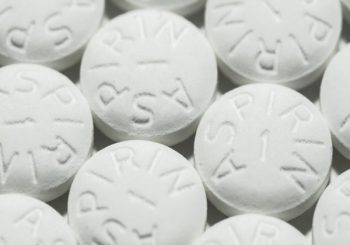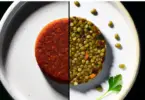By Sayer Ji
Contributing writer for Wake Up World
As far back as the 5th century BC, the Greek physician Hippocrates wrote about the use of a bitter powder extracted from willow bark that reduced fevers and eased aches and pains. Native Americans also used an infusion of willow bark for similar purposes. What was this remarkable “healing” principle within the bark that relieved disease?
[pro_ad_display_adzone id=”110028″]
Known as salicylic acid (from the Latin salix, willow tree), this pain-killing compound is widely distributed throughout plants, where it functions as a hormone. The more vegetables and fruits you consume, the more likely you are to have a physiologically significant concentration of salicylic acid in your blood. This is why, for instance, vegans and vegetarians generally have higher levels than most grain- and meat-based consumers. [1]
The chemical acetyl-salicylic acid, commonly known as aspirin, is a synthetic form of salicylic acid, a compound which is formed when salicin, a bitter compound naturally found within plants like white willow bark, is broken down within the human body. Salicylic acid can also be synthesized endogenously from benzoic acid, and its urinary metabolite, salicyluric acid, has been found to overlap levels in patients on low-dose aspirin regimens. Cell research indicates that salicylic acid compounds (known as salicyclates) actually compare surprisingly well to aspirin in reducing inflammatory activity.[2]
While salicylic acid is found naturally in plants as salicylates, acetyl-salicylic acid does not exist in nature, is not formed as byproduct of natural salicylate consumption,[3] and is produced only through industrial synthesis. For example, this is one method of synthesis:
Acetylsalicylic acid is prepared by reacting acetic anhydride with salicylic acid at a temperature of <90 deg C either in a solvent (e.g., acetic acid or aromatic, acyclic, or chlorinated hydrocarbons) or by the addition of catalysts such as acids or tertiary amines.“[4]
Also, the chemical modification of natural salicylic acid with an acetyl group results in the acetylation of hemoglobin,[5] essentially chemically altering the natural structure-function of our red blood cells and subsequent hemodynamics. In essence, aspirin, a semi-synthetic compound, makes the blood tissue itself semi-synthetic.
This could be why aspirin has been linked to such a broad range of unintended adverse health effects, including but not limited to:
- Gastric Ulcer [6]
- Hearing Loss/Tinnitus[7] [8] [9] [10] [11] [12]
- Cerebral Bleeding [13]
- Influenza Mortality [14]
- Reye Syndrome
- Crohn’s Disease[15]
- Helicobacter Pylori Infection[16]
We have a section on our database dedicated to indexing the under-reported, unintended adverse effects of aspirin, related to 50 diseases which can be viewed here: Aspirin Side Effects. We also have a section which indexes research on natural compounds studied to prevent, reduce or reverse Aspirin-Induced Toxicity.
According to US EPA statistics, up to 500 thousand pounds of the chemical was produced in the United States in 1998 alone.[17] Millions the world over take it for pain relief, including your typical headache, but also for the prevention of heart attacks and stroke.
Taking a “baby aspirin,” i.e. an 81 mg dose, is considered safer — which it is relative to a 325 mg “adult dose” – but is known to cause widespread and significant gastroduodenal damage. A study published in 2009 in the journal Currrent Medical Research & Opinion titled, “Gastroduodenal toxicity of low-dose acetylsalicylic acid: a comparison with non-steroidal anti-inflammatory drugs,” found the following:
“Data suggest that ASA causes significant gastroduodenal damage even at the low doses used for cardiovascular protection. These effects (both systemic and possibly local) may be pharmacodynamically distinct from the gastroduodenal toxicity seen with NSAIDs.”[18]
Another 2009 study found that 80% of healthy individuals who uses short-term (14 days), low-dose aspirin experienced small intestinal toxicity, including small bowel mucosal breaks and mucosal inflammation. [19] Also, there are reports of esophageal mucosal lesions induced by low-dose aspirin and other antiplatelet medications mimicking esophageal malignancy.[20]
Data suggest that ASA [aspirin]causes significant gastroduodenal damage even at the low doses used for cardiovascular protection. These effects (both systemic and possibly local) may be pharmacodynamically distinct from the gastroduodenal toxicity seen with NSAIDs.[21]
Hemorrhagic side effects, in fact, are one of the greatest challenges facing those who use aspirin for prevention. By taking a drug which prevents clotting, aspirin can work too well, resulting in bleeding disorders or events, some of which may be life-threatening, even lethal.
So, given the serious, unintended adverse health effects of aspirin therapy, what are some evidence-based natural alternatives?
Researched aspirin alternatives include:
- Pycnogenol: A human study published in 1999 in the journal Thrombotic Research found that pycnogenol was superior (i.e. effective at a lower dosage) to aspirin at inhibiting smoking-induced clotting, without the significant (and potentially life-threatening) increase in bleeding time associated with aspirin use.[22] The abstract is well worth reading in its entirety:
“The effects of a bioflavonoid mixture, Pycnogenol, were assessed on platelet function in humans. Cigarette smoking increased heart rate and blood pressure. These increases were not influenced by oral consumption of Pycnogenol or Aspirin just before smoking. However, increased platelet reactivity yielding aggregation 2 hours after smoking was prevented by 500 mg Aspirin or 100 mg Pycnogenol in 22 German heavy smokers. In a group of 16 American smokers, blood pressure increased after smoking. It was unchanged after intake of 500 mg Aspirin or 125 mg Pycnogenol. In another group of 19 American smokers, increased platelet aggregation was more significantly reduced by 200 than either 150 mg or 100 mg Pycnogenol supplementation. This study showed that a single, high dose, 200 mg Pycnogenol, remained effective for over 6 days against smoking-induced platelet aggregation. Smoking increased platelet aggregation that was prevented after administration of 500 mg Aspirin and 125 mg Pycnogenol. Thus, smoking-induced enhanced platelet aggregation was inhibited by 500 mg Aspirin as well as by a lower range of 100-125 mg Pycnogenol. Aspirin significantly (p<0.001) increased bleeding time from 167 to 236 seconds while Pycnogenol did not. These observations suggest an advantageous risk-benefit ratio for Pycnogenol.” [emphasis added]
Pycnogenol also has about as many “side benefits” as aspirin has side effects. You can view them on our pycnogenol research page.
- Policosanol: Already well-known for its ability to modulate blood cholesterol levels as effectively as statins, but without their notorious side effects, this sugar cane wax extract has been found to be as effective as aspirin at inhibiting clotting, but at a lower, safer dose.[23]
There are actually a broad range of natural compounds, including foods and spices, with demonstrable platelet-inhibiting activity. You will find a list of them on our natural platelet inhibitor pharmacological actions page. Another highly relevant section on our website is the Thrombosis Research page.
Ultimately, however, cardiovascular disease and heart attacks, for instance, are not caused by a lack of aspirin. To explore further the research related to preventing and treating heart disease naturally, visit our Health Guide: Heart Health.
Learn also about the dangers of NSAID drugs like ibuprofen which have been proven to cause tens of thousands of deaths from cardiovascular disease ach year: Ibuprofen Kills Thousands Each Year, So What Is The Alternative?
References:
[1] C J Blacklock, J R Lawrence, D Wiles, E A Malcolm, I H Gibson, C J Kelly, J R Paterson. Salicylic acid in the serum of subjects not taking aspirin. Comparison of salicylic acid concentrations in the serum of vegetarians, non-vegetarians, and patients taking low dose aspirin. J Clin Pathol. 2001 Jul ;54(7):553-5. PMID: 11429429
[2] Pharmacokinetics of aspirin and salicylate in relation to inhibition of arachidonate cyclooxygenase and antiinflammatory activity. Proc Natl Acad Sci U S A. 1987 Mar ;84(5):1417-20. PMID: 3103135
[3] P L Janssen, M B Katan, W A van Staveren, P C Hollman, D P Venema. Acetylsalicylate and salicylates in foods. Cancer Lett. 1997 Mar 19 ;114(1-2):163-4. PMID: 9103279
[4] [Ullmann’s Encyclopedia of Industrial Chemistry. 6th ed.Vol 1: Federal Republic of Germany: Wiley-VCH Verlag GmbH & Co. 2003 to Present, p. V31 725 (2003)]
[5] K R Bridges, G J Schmidt, M Jensen, A Cerami, H F Bunn. The acetylation of hemoglobin by aspirin. In vitro and in vivo. J Clin Invest. 1975 Jul;56(1):201-7. PMID: 237937
[6] Gastroduodenal toxicity of low-dose acetylsalicylic acid: a comparison with non-steroidal anti-inflammatory drugs. Curr Med Res Opin. 2009 Nov;25(11):2785-93. PMID: 19788350
[7] Analgesic use and the risk of hearing loss in men. Am J Med. 2010 Mar;123(3):231-7. PMID: 20193831
[8] Hearing loss in a woman on aspirin: the silent pharmacokinetic parameter. Ther Drug Monit. 2009 Feb;31(1):1-2. PMID: 19155962
[9] Too much of a good thing: long-term treatment with salicylate strengthens outer hair cell function but impairs auditory neural activity. Hear Res. 2010 Jun 14;265(1-2):63-9. Epub 2010 Mar 6. PMID: 20214971
[10] Long-term administration of salicylate enhances prestin expression in rat cochlea. Int J Audiol. 2009 Jan;48(1):18-23. PMID: 19173110
[11] Behavioral assessment and identification of a molecular marker in a salicylate-induced tinnitus in rats. Neuroscience. 2010 Feb 17;165(4):1323-32. Epub 2009 Dec 1. PMID: 19958810
[12] Salicylate-induced degeneration of cochlea spiral ganglion neurons-apoptosis signaling. Neuroscience. 2010 Jun 16;168(1):288-99. Epub 2010 Mar 15. PMID: 20298761
[13] Predictors of mortality in trauma patients with intracranial hemorrhage on preinjury aspirin or clopidogrel. J Trauma. 2008 Oct;65(4):785-8. PMID: 18849791
[14] The effect on mortality of antipyretics in the treatment of influenza infection: systematic review and meta-analysis. J R Soc Med. 2010 Oct;103(10):403-11. PMID: 20929891
[15] Aspirin in the aetiology of Crohn’s disease and ulcerative colitis: a European prospective cohort study. Aliment Pharmacol Ther. 2011 Sep ;34(6):649-55. Epub 2011 Jul 26. PMID: 21790683
[16] Helicobacter pylori infection in bleeding peptic ulcer patients after non-steroidal antiinflammatory drug consumption. World J Gastroenterol. 2011 Oct 28 ;17(40):4509-16. PMID: 22110282
[17] Toxnet.nlm.nih.gov, Hazardous Substances Data Base: Aspirin
[18] Neville D Yeomans, Christopher J Hawkey, Wayne Brailsford, Jørgen Naesdal. Gastroduodenal toxicity of low-dose acetylsalicylic acid: a comparison with non-steroidal anti-inflammatory drugs. Curr Med Res Opin. 2009 Nov;25(11):2785-93. PMID: 19788350
[19] Incidence of small bowel injury induced by low-dose aspirin: a crossover study using capsule endoscopy in healthy volunteers. Digestion. 2009;79(1):44-51. Epub 2009 Feb 26. PMID: 19246922
[20] Esophageal mucosal lesion with low-dose aspirin and prasugrel mimics malignancy: a case report. World J Gastroenterol. 2011 Sep 21 ;17(35):4048-51. PMID: 22046096
[21] Gastroduodenal toxicity of low-dose acetylsalicylic acid: a comparison with non-steroidal anti-inflammatory drugs. Curr Med Res Opin. 2009 Nov;25(11):2785-93. PMID: 19788350
[22] M Pütter, K H Grotemeyer, G Würthwein, M Araghi-Niknam, R R Watson, S Hosseini, P Rohdewald. Inhibition of smoking-induced platelet aggregation by aspirin and pycnogenol. Thromb Res. 1999 Aug 15;95(4):155-61. PMID: 10498385
[23] M L Arruzazabala, S Valdés, R Más, D Carbajal, L Fernández. Comparative study of policosanol, aspirin and the combination therapy policosanol-aspirin on platelet aggregation in healthy volunteers. Pharmacol Res. 1997 Oct;36(4):293-7. PMID: 9425618
Recommended Articles by Sayer Ji:
- The Power and Mystery of Melanin Explained
- Cell Phone Induced Bodily Harm: How the Bees Can Help
- The Spice That Prevents Fluoride Destroying Your Brain
- How to Clean Your Arteries with One Simple Fruit
- 7 Healing Uses for Lavender Essential Oil
- From Table to Tomb: Cumin’s Health Benefits Rediscovered
- Why You Should Ditch Sugar in Favour of Honey
- The Love Affair Between Saffron and Humanity: As Ancient as Time Itself
- Why Walnut Resembles the Brain It Nourishes
- Magnesium Puts Psychiatric Drugs to Shame for Depression
About the author:
Sayer Ji is the founder of Greenmedinfo.com, a reviewer at the International Journal of Human Nutrition and Functional Medicine, Co-founder and CEO of Systome Biomed, Vice Chairman of the Board of the National Health Federation, and Steering Committee Member of the Global Non-GMO Foundation.
© 2020 GreenMedInfo LLC. This work is reproduced and distributed with the permission of GreenMedInfo LLC. Want to learn more from GreenMedInfo? Sign up for their newsletter here.
[pro_ad_display_adzone id=”110027″]








